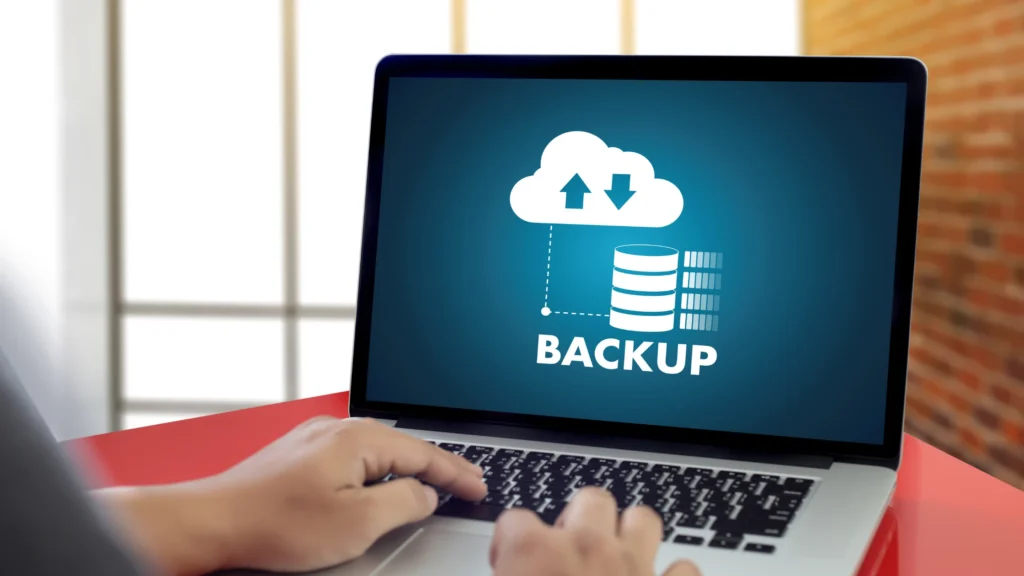Imagine you run a website and one morning you log in and discover it’s gone. All your website files are missing. You face data loss. Your visitors can’t access your site. Your e-Commerce website can’t take orders. Your small business website can’t serve customers.
That’s the moment you realize the real cost of not backing up your website.
When you skip website backup, you don’t just risk losing files; you risk losing money, time, trust, and your entire online presence.
On a global scale, global website users expect your site to always be up. Without cloud backup, you leave your business open to downtime and server failure. And fixing things after the fact is far more expensive than prevention.
In this article, we’ll explore the real cost of not backing up your website data in simple terms.
We’ll highlight the causes of data loss, the financial and non-financial impacts, how automated website backups help, and how CloudPap protects your site.
Hence, you never have to ask, “What’s the real cost of not backing up your website data?” again.
Why Website Data Loss Happens More Often Than You Think

Site data loss is more common than many people assume. If you skip website backup, you open your site to serious risks. Let’s run through the leading causes of website data loss.
- Server Failure: The machine that hosts your website can crash or fail. When that happens, all your website files, your database, and your CMS can vanish.
- Human Error: Someone accidentally deletes files or overwrites important info. That’s human error. You thought everything was safe, but it wasn’t.
- Cyberattack: Hackers can breach your site. A ransomware event might lock your data and demand payment. That’s why you need ransomware protection and disaster recovery readiness.
- No Backup: If you don’t use cloud backup or have a data recovery plan, you risk losing everything when the unexpected happens.
- Inadequate Backup Frequency: If your backup frequency is weekly or monthly, you risk losing days of data. Better to have it daily, or even in real-time.
When you ignore proper backups, you create a business continuity risk. Without automated backups, you rely on manual processes that may fail. With off-site data storage, you spread safety; without it, your hosting provider could go down and take you with it.
So, what’s the real cost of not backing up your website? It’s not just lost files, it’s lost trust, lost business, and maybe even going under.
The Hidden Financial Impact of Losing Your Website
Now, let’s talk numbers. What’s actually at stake if you skip website backup and face data loss? The average website downtime cost is stunning. According to research, many businesses face costs of $5,600 per minute (average) when downtime hits. For some industries, the website downtime cost is much higher.
Here are the kinds of financial hits you face when you lose your website data.
- Lost Sales: If your E-commerce Website is down, you can’t sell. Every second without visits or carts means revenue is lost.
- Lost Traffic and Leads: Your SEO takes a hit, visitor numbers drop, and you lose potential customers.
- Developer/Rebuild Costs: If you have to pay to restore or rebuild, your recovery cost can quickly increase from low to high.
- Productivity and Time Lost: Staff wait for the site to become operational again. Your team can’t work.
- Brand Reputation Damage: When customers see the site down, they may never return—that’s customer impact: lost trust, reduced traffic, churn.
If you face just one hour of website downtime, for bigger companies, it could cost hundreds of thousands to millions of dollars. Businesses that rely on uptime face significantly higher website downtime costs.
For a small business website, the number may be lower, but the impact relative to its size is still huge.
So again: the real cost of not backing up your website is not just “I lost files.” It’s “I lost revenue, customers and future growth”.
The Non-Financial Damage of Losing Your Website Data No One Talks About
Money is critical! But there are invisible wounds when you skip proper website backups. Here are the non-financial consequences of not having a solid website backup and recovery plan.
- Brand Reputation Damage: Your audience expects reliability. When your site goes down or you lose data, trust drops. That can hurt for years.
- Customer Trust Erosion: If you lose your customers’ data, files, or orders, users feel unsafe. The majority of global website users may move on.
- SEO and Visibility Loss: Search engines penalize downtime or lost content. You lose long-term traffic.
- Legal and Compliance Issues: If you handle personal data, failing to protect it or maintain backups may violate GDPR, HIPAA, or other rules.
- Team Morale: Your staff feel stressed when they can’t access files, when recovery delays happen, or when you rely on manual restore processes.
So the truth is, skipping website backup affects your website security, your business continuity, and your global presence. These hits may not show up in a spreadsheet right away, but they hurt in the long term. And we’re talking about the deeper layer of the real cost of not backing up your website.
Comparing Website Backup vs. Recovery Costs
Let’s compare two paths: one where you invest in website backup and another where you don’t, facing a full recovery.
Here’s a simple table showing the cost of backing up your website data and the recovery cost if you fail to do so.
| Scenario | Outcome | Monthly/Upfront Cost | Potential Recovery Cost |
| Backup in place | You use cloud storage, your data retention policy is set, and backups are automated either daily or in real-time. | Low monthly cost | Minimal, you just restore quickly |
| No backup | You rely on nothing but manual backups, face data loss, server failure, ransomware, and need a full site rebuild | Zero to low cost (but risky) | High to very high — lost business, rebuild fee, reputation damage |
When your storage type is cloud rather than on-premise, or hybrid, you gain more resilience. For example, using CloudPap backup solutions with a 99.99% uptime guarantee gives you peace of mind.
The cost to backup is predictable and relatively small. The cost of website data backup when disaster strikes is unpredictable and massive.
Additionally, if your backup involves an encryption level of AES-256, storage redundancy in multiple regions, and a strict backup retention policy of 7, 30, or 90 days, you build a strong defense. On the flip side, if you don’t follow a data retention policy, you may lose older versions of data that you can’t recover.
How Automated Backups Save You From Disasters
Now, let’s talk about how you actually protect yourself and avoid the real cost of not backing up your website by doing things right.
Automated backups are key. Rather than remembering to back up manually, you set it, schedule it, forget it, and know it’s happening.
Here are the elements.
- Backup Type: Full backups copy everything, incremental backups only what has changed, and differential backups are somewhere in between. Choosing correctly keeps your site safe and storage efficient.
- Backup Frequency (daily, weekly, real-time): The more frequent, the less data you lose if you have a crash. Real-time replication means minimal loss.
- Cloud Storage: Using cloud storage means your backups are off-site, safe from local hazards like fire or theft.
- Encrypted Cloud Storage: With an AES-256 encryption level, even if someone accessed backup storage, they couldn’t read your data. That’s vital for website security.
- Storage Redundancy (single-region, multi-region): If you use multi-region backups, you’re safe even if one data center fails.
With something like CloudPap backup solutions, you get a backup service that automatically handles all these tasks. It monitors your website files, your database, and your CMS, and runs a data recovery process when needed.
When disaster strikes, whether it’s a server failure or a ransomware event, you press restore and get your site back. That’s a website restore process in action.
The Smart Way to Protect Your Website Data

Now, let me introduce you to how CloudPap fits into all this. When you need a backup and recovery partner, you want something that works globally, something built for protection and ease. That’s precisely what CloudPap backup solutions offer.
Here’s how CloudPap protects you from the real cost of not backing up your website.
- Backup Automation is enabled, scheduled, and manual (but you can set it and forget it).
- Backup Frequency options: daily, weekly, and real-time, so your site is always covered.
- Cloud Storage with a high encryption level, AES-256, so your backups are safe and secure.
- Storage Redundancy multi-region, meaning data is stored across multiple places globally for extra security.
- With a database backup, not just your site files, but your entire site data is safe.
- 99.99% Uptime Guarantee gives you peace of mind that your backup system is always working.
- Support all Website types, WordPress, Joomla, Drupal, and custom CMS, so no matter your site, you’re covered.
For a small business website, a startup, or an enterprise, you get the same backbone. The alternative is risking the full-scale cost. In other words, you invest a little and avoid significant losses. You protect your website security, your business continuity, and your data.
How to Start Backing Up Your Website the Right Way
Okay, now let’s walk through how you actually start backing up your website. You don’t need to be a tech expert to back up your site. You can make this happen. It’s simple.
Step 1: Choose a backup plan.
Find a service or provider with backup storage in the cloud, offers cloud backup, supports off-site data storage, and meets your needs for backup frequency.
Step 2: Set up automation.
Enable automated backups. Choose how often you want to run backups: daily, weekly, or real-time. Make sure it includes your database backup and your website files, not just part of your site.
Step 3: Enable secure storage.
Pick a provider with secure, encrypted cloud storage. Use encryption like AES-256. Make sure you pick a storage type—cloud, on-premise, or hybrid—based on your needs. If you can, choose a hybrid solution: both local and cloud backups.
Step 4: Set a retention policy.
Decide how long to keep backups: retention periods of 7, 30, or 90 days are common. A good backup retention policy means you can restore older versions if you didn’t spot the problem right away.
Step 5: Test your restores.
Regularly verify that you can restore your website, that your data recovery process works, and that your disaster recovery plan is ready. If you don’t test, you’re risking that your backup is broken when you need it.
Step 6: Monitor and maintain.
Use backup automation tools, monitor backup logs, check for human error data loss, and keep your site and hosting provider updated. Use a reliable hosting provider and set up alerts.
Don’t Gamble With Your Website Data
If you skip your website backups, you’re gambling. And the odds are not in your favor. The losses when you face data loss, a cyberattack, or server failure are massive. The cost of not having a plan is much larger than the cost of having one.
So when you ask “What’s The Real Cost of Not Backing Up Your Website?”, now you know: it could mean your business, your brand, your global reach.
Choose to protect your site. Choose to back up your data with CloudPap backup solutions. Choose automation, encryption, redundancy, and peace of mind. Don’t wait. Because when disaster strikes, it’s too late to ask “What’s the real cost?” — you’ll already be paying.
Start today, secure your site, and save your future.
The Real Cost of Not Backing Up Your Website FAQs
1. What is the real cost of not backing up your website data?
The real cost of not backing up your website data is more than just money. You risk data loss, downtime, lost customers, and a damaged brand image. On average, the cost of downtime can reach $5,600 per minute, especially for e-commerce or global websites. Using CloudPap backup solutions helps prevent this by running automated backups and keeping your files safe in encrypted cloud storage.
2. How often should I back up my website data?
Your website backup frequency depends on how often your website changes.
- Small business websites can back up daily.
- E-commerce websites benefit from real-time or hourly backups to protect every sale and customer record. With CloudPap Backup Solutions, you can set your backups to run daily, weekly, or in real-time.
3. What causes website data loss?
Website data loss usually happens because of server failure, human error, or cyberattacks like ransomware. It can also come from outdated plugins or CMS issues. Regular automated cloud backups help prevent complete loss and shorten recovery time. CloudPap protects your data with AES-256 encryption and stores it safely in multi-region cloud storage.
4. How long does it take to recover a website after data loss?
Your data recovery time depends on how prepared you are. Without backups, recovery can take days or even weeks. With CloudPap backup solutions, we restore most websites in minutes. This helps you cut downtime, protect business continuity, and reduce recovery costs.
5. Why should I choose CloudPap backup solutions for website protection?
You should choose CloudPap backup solutions because we make website data protection easy and reliable. You get 99.99% uptime, AES-256 encryption, automated backups, and multi-region redundancy. Whether you run a WordPress, Joomla, or custom CMS, CloudPap helps you stay compliant with GDPR and HIPAA while keeping your data secure and ready to recover anytime.

